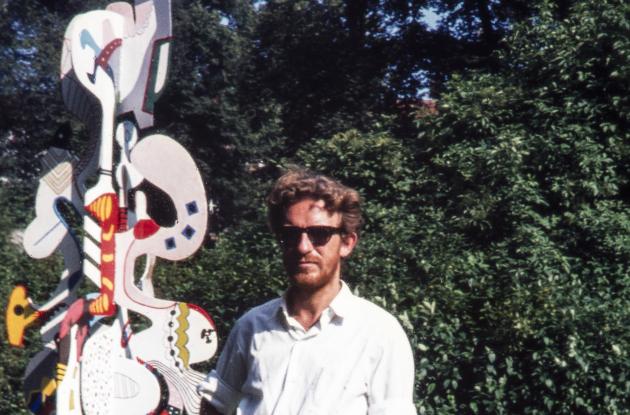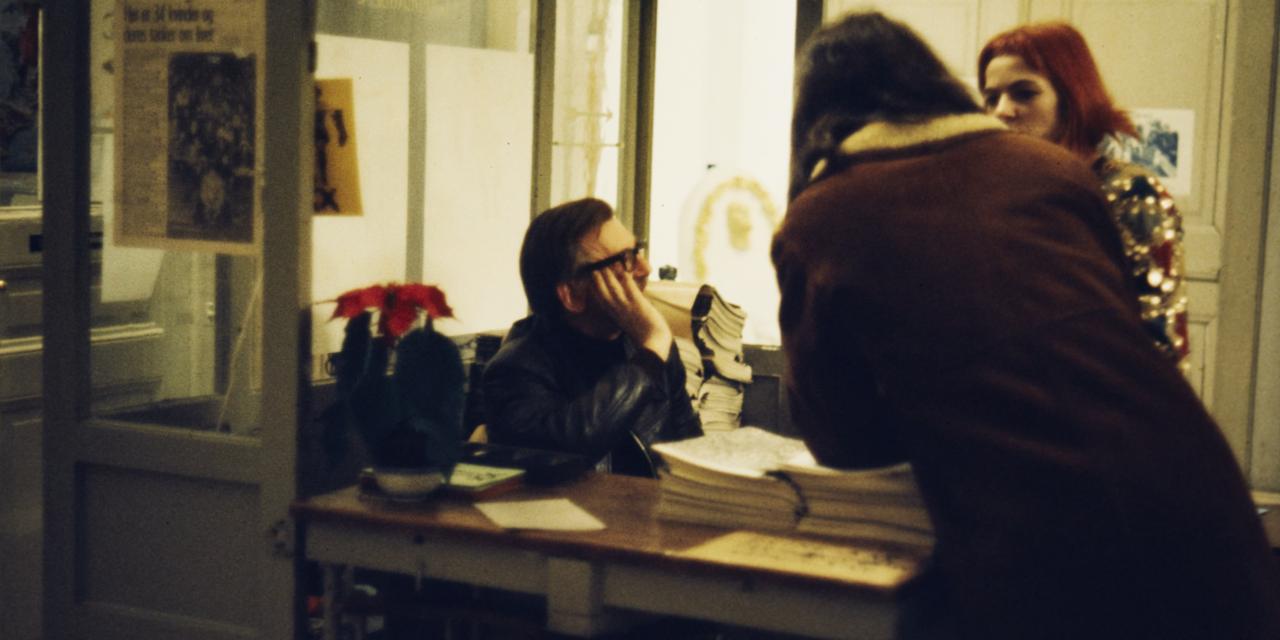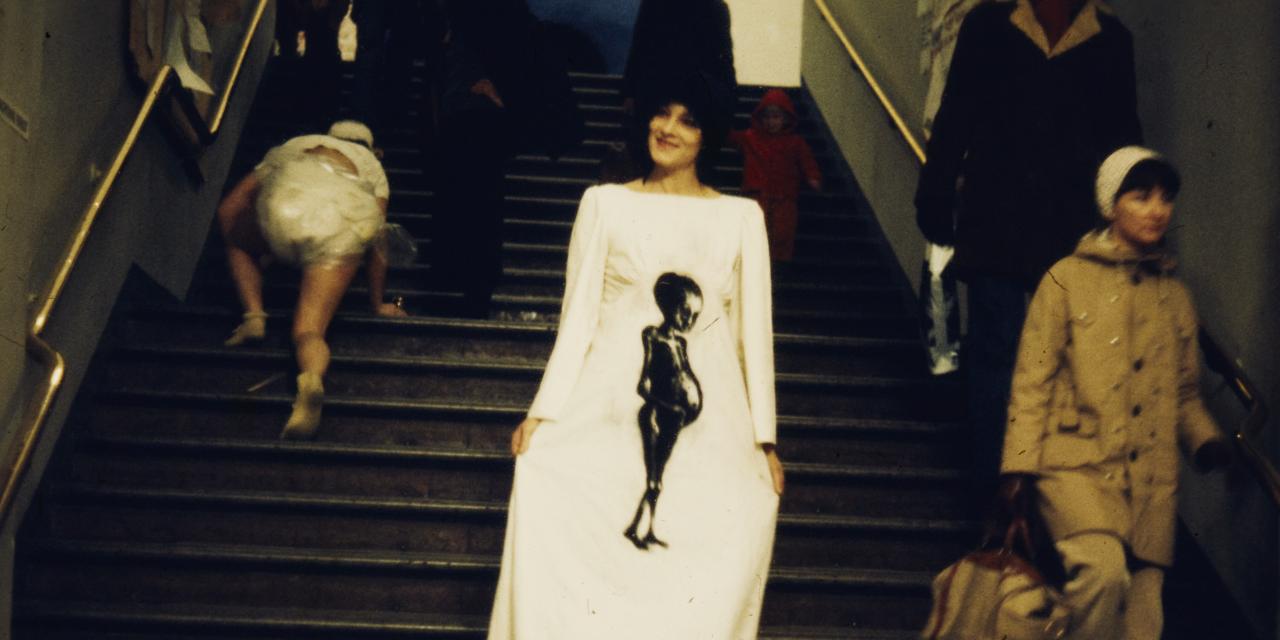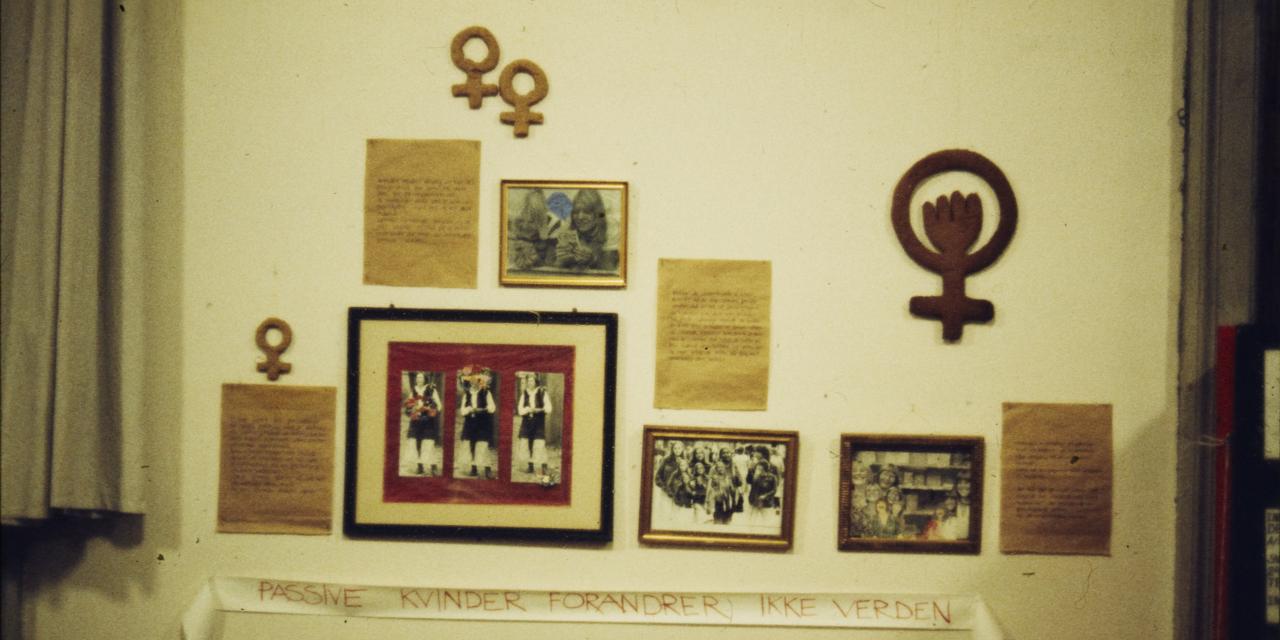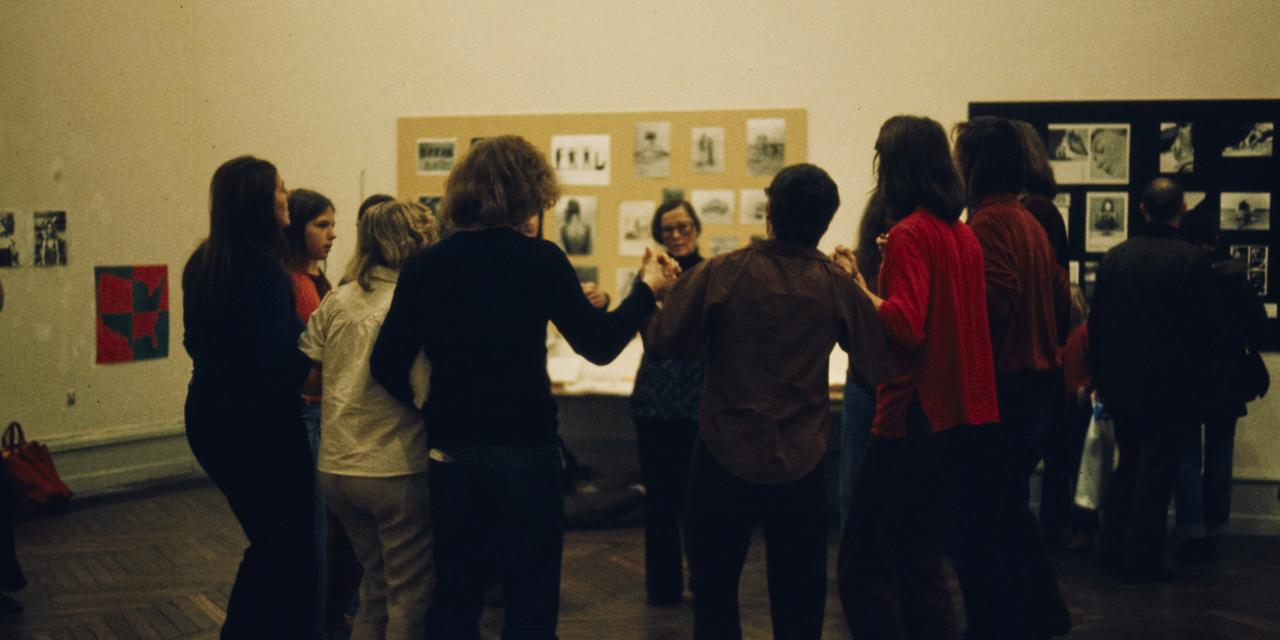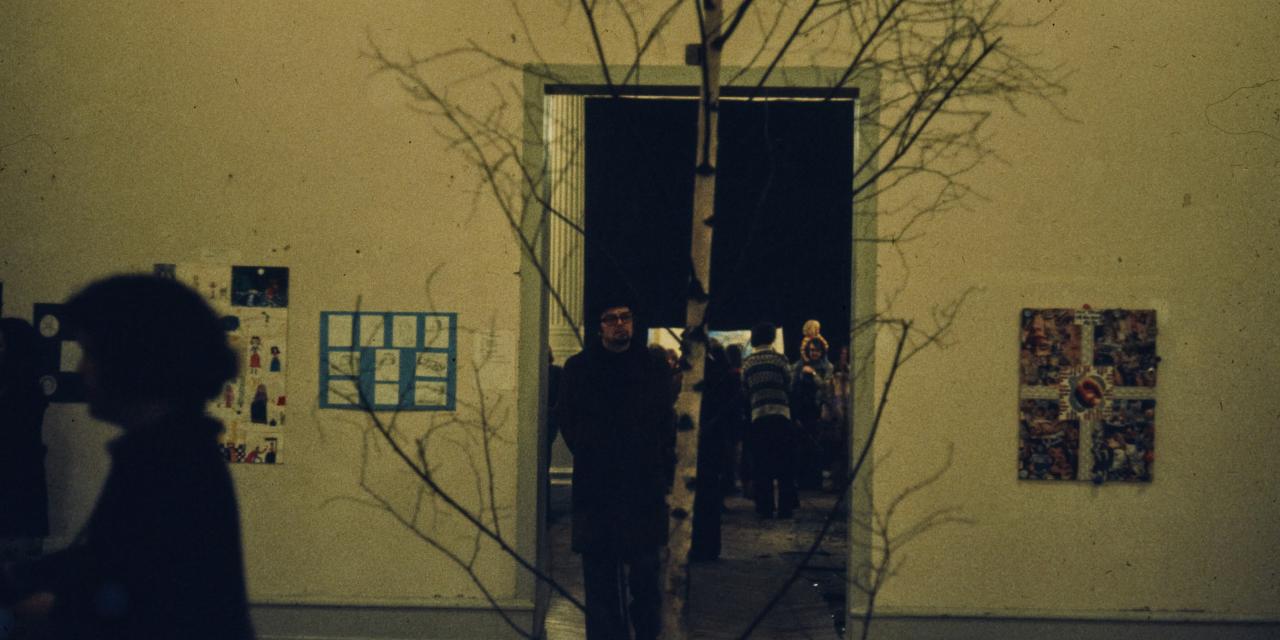Bent Petersen, the camera and art
Bent Petersen's enormous interest in art resulted in a collection of approximately 63,000 slides. Dive into the portrayal of vernissages, happenings and exhibitions in the 70s and 80s.
At a time when few people thought of documenting the art life in Denmark, Bent Petersen (1939-2011) photographed almost everything he saw of art. His unique slide collection therefore provides an invaluable insight into Danish art in particular. He also collected art and then founded the art magazine North.
However, it was not written in the stars that it was a life dedicated to art that Bent Petersen was to live. He came from a home where art and culture did not play a major role. Later he studied physics, chemistry and mathematics and then psychology at the University of Copenhagen. However, he dropped out of studies and instead became a teacher and taught for approximately 10 years before he left his job in 1982 to devote himself to his interest in art. It was especially the work of running and producing the art magazine North, which he had founded in 1976 together with his colleague Poul Henning Petersen and the artist Henrik Have, that took time. The dissemination of art had become his life's mission.
What is a slide?
A slide is a transparent photograph (in colour or black and white) that can be viewed directly or projected onto a screen. Another word for slide is transparency. The word dias is a short form of the word diapositive (composed of the Greek word dia-, meaning "through" and the Latin word positivus, meaning "set up"). A slide is recorded on a roll of film with a camera. After developing, you can cut out the individual images and mount them in a frame. In this way, you can better handle the individual image and, for example, put it down in a slide viewer, so that you can project the image onto a screen. Slides and slide projectors had their days of glory from the 1960s until the mid-1990s. After that, they went out of fashion when the digital camera gained foothold.
The art shock in Germany
The idea for the art magazine North and the many offshoots that sprung from it: North-information, North-art magazine, North-calendar, was born during a trip to Germany. Bent Petersen has said in interviews that it was his encounter with the international avant-garde art of the 70s that was the starting point for his own passion for art.
In Cologne and Düsseldorf in the mid-70s, he saw works by for example Joseph Beuys, Allan Kaprow and Dieter Roth. Bent Petersen was overwhelmed. It dawned on him that contemporary art in the Nordics lived a shadowy existence and was often overlooked by both museum staff and critics. Although experimental art was created in Denmark by for example the artists from Eks-Skolen and Fluxus, then it was not art that was common and widely known. A life project was thus in the making: Progressive art in the Nordics had to be disseminated and have a platform.
The art magazine North in many ways became that platform. After returning home from the art shock in Germany, Bent Petersen decided, together with Poul Henning Petersen and Henrik Have, to establish the art magazine North. The first issue was published in 1976 and featured the artists Stig Brøgger, Carl-Erik Ström, Mogens Møller, Jytte Rex, Hein Heinsen and Steen Høyer. In the mid-1990s, Bent Petersen also opened the exhibition site North, which was located in Nørregade in Copenhagen together with the magazine. However, after almost five years in 2001, the exhibition venue had to close. It was not without financial costs to run an art magazine and an exhibition venue, and at the same time be an amateur photographer and art collector. A threatening bankruptcy was averted in 1985 by Bent Petersen selling large parts of his art collection to the Statens Museum for Kunst. In the 1990s, he handed over his extensive slide collection to the Academy of Arts' Library - which today forms part of Royal Danish Library.
The slide collection and digitisation
Bent Petersen's slide collection contains approximately 63,000 slides. These are primarily pictures of individual works, exhibition hangings, snapshots of situations, performances and happenings. All the pictures are set in frames and boxes and are registered in several binders.
Bent Petersen was thorough when he left with the camera. He visited some exhibitions several times. One can imagine how, returning from an exhibition visit, he developed the film roll, cut up the strip and mounted the images in small slide frames, then minutely noted down details about the exhibition, its title, works, duration and location. For example, Bent Petersen visited the Women's Exhibition at Charlottenborg in Copenhagen in 1976 on several occasions while the exhibition was on. His pictures of the event are today one of the most important source documentations of the exhibition.
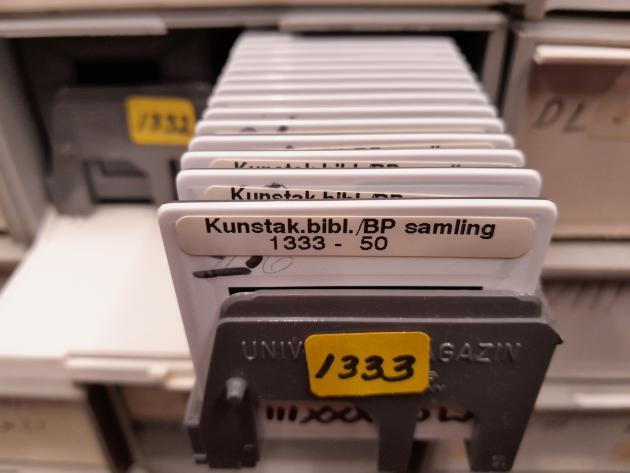
Photo: Det Kgl. Bibliotek
From 2023-2024, Royal Danish Library digitised Bent Petersen's slide collection. In this way, we ensure that the collection does not perish and make it more accessible. Bent Petersen was not a professional photographer. He photographed out of love for art and mainly for his own use and as documentation. The originals, which Royal Danish Library have digitised, are therefore often blurred and skewed. We have deliberately not corrected this because we always digitise material as close as possible to the starting point. Bent Petersen's enthusiasm for art and enormous work in documenting contemporary art at a time when it was not given attention means that today we can document at least some of that history.
Explore Bent Petersen's slide collection
In Digital collections you can dive into Bent Petersen's slide collection. The collection consists of approximately 63,000 slides primarily of Danish art and artistic life from the beginning of the 1970s to the end of the 1980s.
